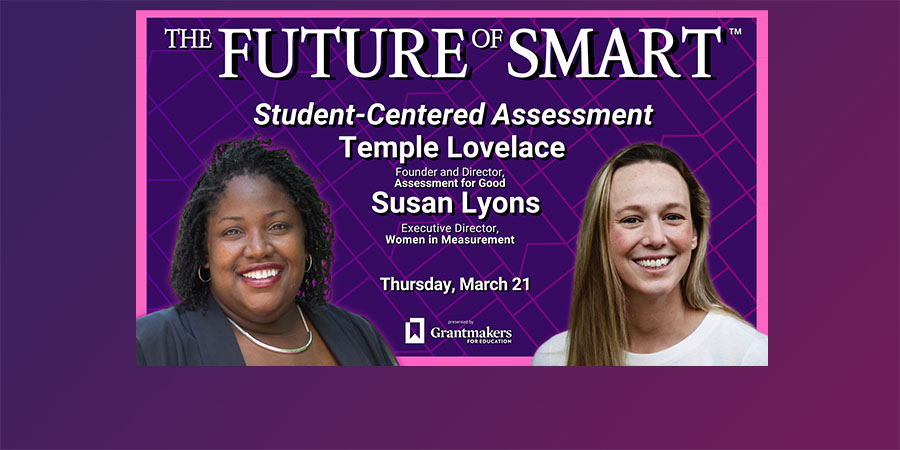Resources
Knowledge begins here
but never ends.
Curated reports, deep research, informational articles, podcasts. Everything you need to stay well
informed in the world of education grantmaking.
The Future of Smart: Episode 28

Dr. Temple Lovelace, executive director of Assessment for Good, and Dr. Susan Lyons, co-founder and executive director of Women in Measurement, join The Future of Smart podcast to talk about thinking differently about measurement and systems of learning and education.
Afterschool and Summer Workforce Solutions Database
New Data on Racial Justice Grants Should Alarm—and Motivate—Education Philanthropy
FILTER RESOURCES
SEARCH RESOURCES
How to Meet Students’ Social-Emotional and Academic Needs When Schools Reopen
Educators are planning for a back to school season like no other in our nation’s history. Students will return with different social-emotional and academic needs depending on their individual experiences during their time away from classrooms. Crafting an empathetic and effective way to meet those needs will take every ounce of educators’ ingenuity and expertise.
Closing America’s Education Funding Gaps
This study from The Century Foundation examining the “funding gap” (the difference between the amount of funding school districts have and how much they need to bring students up to the current national average outcomes on reading and math assessments), which shows that school districts where a majority of the students are Black and Latinx students are nearly twice as likely to have a funding gap than districts where students of color represent less than half the enrollment.
50-State Comparison: Postsecondary Education Funding
What do state policies say about how to fund postsecondary education? This 50-State Comparison answers this question by searching state statutes, state rules and regulations, enacted state budget bills and state postsecondary education agency policies that address postsecondary education budgeting and funding.
First, this resource inventories where publicly available state policies exist and provides citations that underpin postsecondary education budgeting and funding in the state.
Next, this comparison examines whether the budget request process is centralized across institutions or groups of institutions within the state.
Finally, according to the content of the publicly available policies, this resource categorizes the funding models in place and identifies a selection of their underlying drivers, including student enrollment, faculty or facilities needs, completion metrics, and workforce development metrics.
Equity and Inclusion: Effective Practices and Responsive Strategies - A Guidebook for College and University Leaders
This Guidebook builds on a synthesis of relevant interdisciplinary evidence, programs and practices instituted in different universities and the recommendations of higher education leaders who attended the Changing the National Conversation Summit cosponsored by the University of Maryland, College Park, Swarthmore College and the University of Pennsylvania in September 2018.
The data show that modest progress has been made over the past 40 years in widening the underrepresented minority (URM) pathway to the professoriate. Today URM faculty (Black, Latino and Native American) represent approximately 12 percent of all faculty in the 4,000 plus colleges and universities in the U.S. (The percentages of U.S. URM are likely considerably lower as these data include U.S. citizens and permanent residents, temporary visa holders, and those whose citizenship is unknown).
America’s Opportunity Gaps: By the Numbers
The U.S. Chamber of Commerce launched the Equality of Opportunity Initiative to address opportunity gaps that perpetuate broader inequalities in our society and hold back individual and business success and economic growth. In order to drive meaningful, measurable impact through public policy and private sector solutions, we must listen, learn, and lead.
We compiled this research to show the magnitude of opportunity gaps in six key areas. The findings below will inform our work as we pursue targeted, data-driven, and sustainable solutions that will help deliver the American promise of equal opportunity to all.
Ideal Pathways
Submit A Resource
Expand your audience by expanding minds.
We believe in getting research and insights into more hands to support learning for our peers and community. Share your resources that would be useful to education grantmakers.





